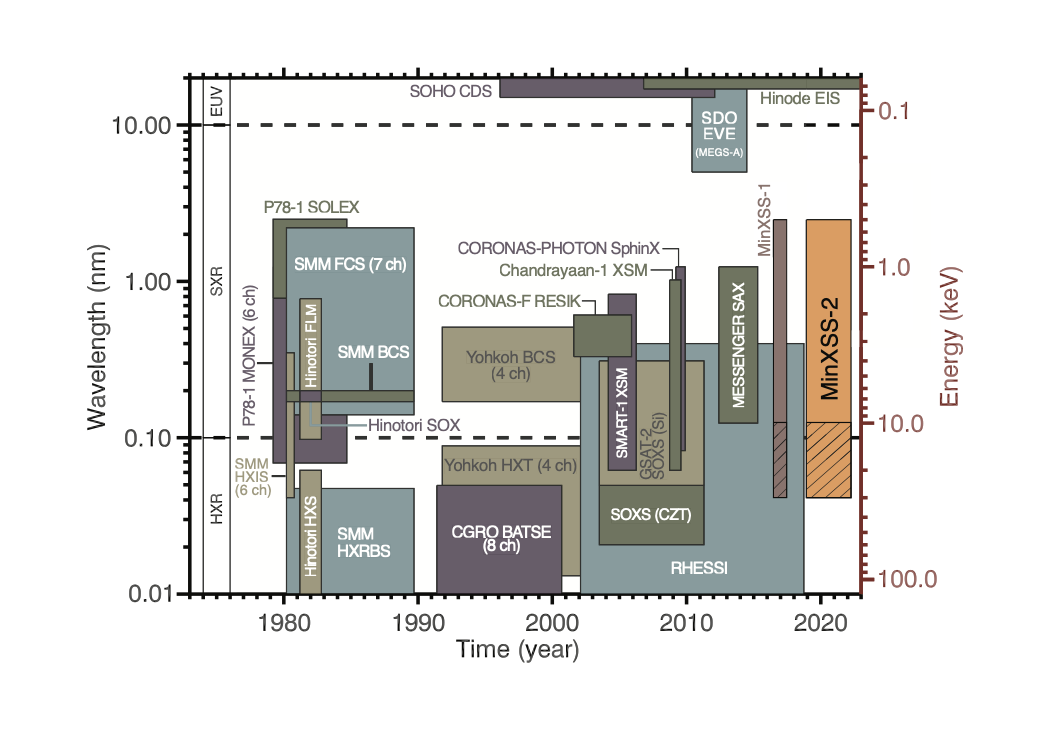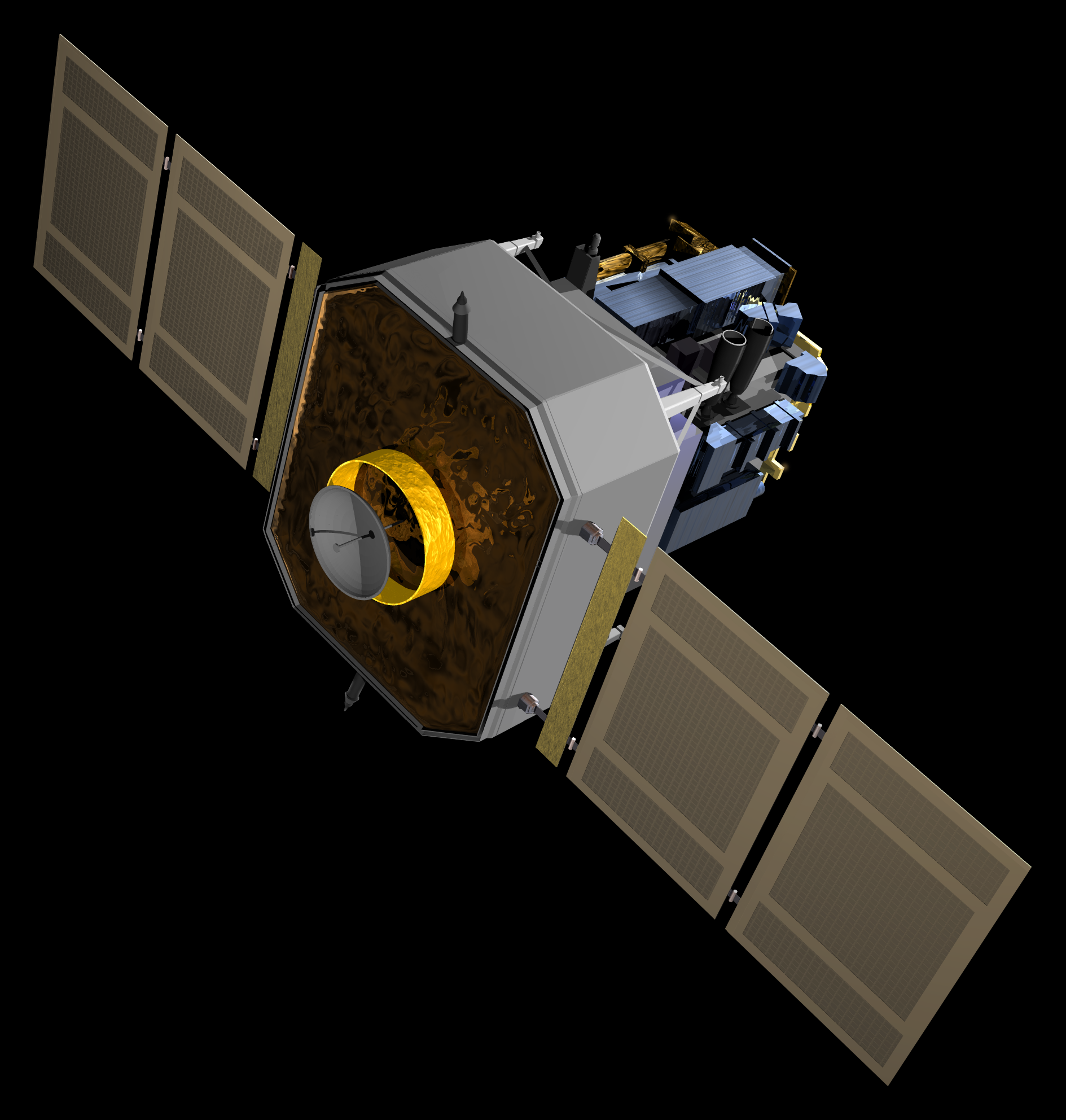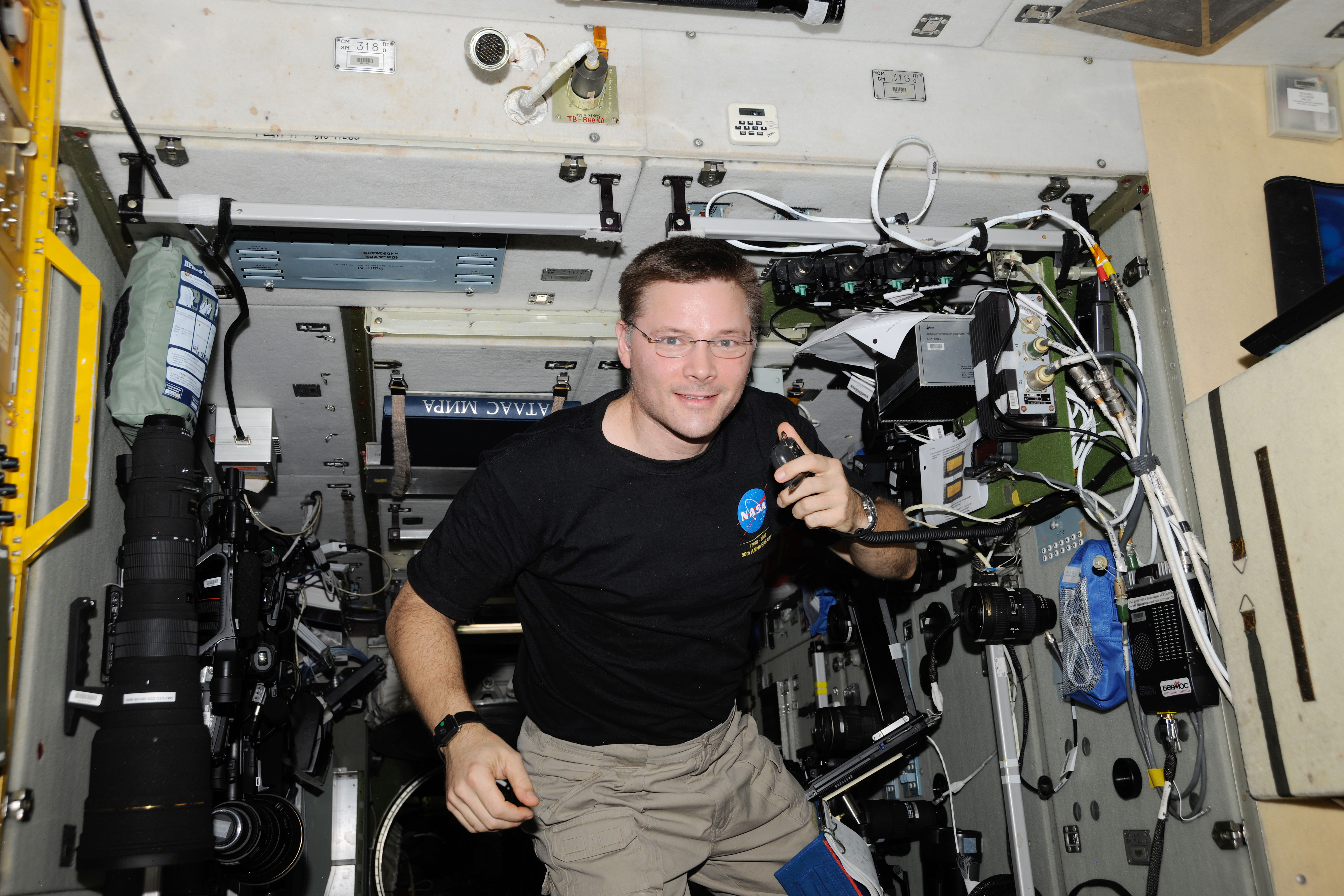|
MinXSS
The Miniature X-ray Solar Spectrometer (MinXSS) CubeSat was the first launched National Aeronautics and Space Administration Science Mission Directorate CubeSat with a science mission. It was designed, built, and operated primarily by students at the University of Colorado Boulder with professional mentorship and involvement from professors, scientists, and engineers in the Aerospace Engineering Sciences department and the Laboratory for Atmospheric and Space Physics, as well as Southwest Research Institute, NASA Goddard Space Flight Center, and the National Center for Atmospheric Research's High Altitude Observatory. The mission principal investigator is Dr. Thomas N. Woods and co-investigators are Dr. Amir Caspi, Dr. Phil Chamberlin, Dr. Andrew Jones, Rick Kohnert, Professor Xinlin Li, Professor Scott Palo, and Dr. Stanley Solomon. The student lead (project manager, systems engineer) was Dr. James Paul Mason, who has since become a Co-I for the second flight model of MinXSS. MinX ... [...More Info...] [...Related Items...] OR: [Wikipedia] [Google] [Baidu] |
Laboratory For Atmospheric And Space Physics
The Laboratory for Atmospheric and Space Physics (LASP) is a research organization at the University of Colorado Boulder. LASP is a research institute with over one hundred research scientists ranging in fields from solar influences, to Earth's and other planetary atmospherics processes, space weather, space plasma and dusty plasma physics. LASP has advanced technical capabilities specializing in designing, building, and operating spacecraft and spacecraft instruments. History Founded after World War II, the first scientific instruments built at LASP were launched into space using captured German V-2 rockets. To this day LASP continues a suborbital rocket program through periodic calibration instrument flights from White Sands Missile Range. It was originally called the Upper Air Laboratory, but changed to its current name in 1965. LASP has historical ties to Ball Aerospace Corporation and the Center for Astrophysics and Space Astronomy (CASA). Facilities LASP has two main f ... [...More Info...] [...Related Items...] OR: [Wikipedia] [Google] [Baidu] |
CubeSat
A CubeSat is a class of miniaturized satellite based around a form factor consisting of cubes. CubeSats have a mass of no more than per unit, and often use commercial off-the-shelf (COTS) components for their electronics and structure. CubeSats are put into orbit by deployers on the International Space Station, or launched as secondary payloads on a launch vehicle. , more than 1,600 CubeSats have been launched. In 1999, California Polytechnic State University (Cal Poly) professor Jordi Puig-Suari and Bob Twiggs, a professor at Stanford University Space Systems Development Laboratory, developed the CubeSat specifications to promote and develop the skills necessary for the design, manufacture, and testing of small satellites intended for low Earth orbit (LEO) that perform a number of scientific research functions and explore new space technologies. Academia accounted for the majority of CubeSat launches until 2013, when more than half of launches were for non-academic purposes, ... [...More Info...] [...Related Items...] OR: [Wikipedia] [Google] [Baidu] |
Solar Physics
Solar physics is the branch of astrophysics that specializes in the study of the Sun. It deals with detailed measurements that are possible only for our closest star. It intersects with many disciplines of pure physics, astrophysics, and computer science, including fluid dynamics, plasma physics including magnetohydrodynamics, seismology, particle physics, atomic physics, nuclear physics, stellar evolution, space physics, spectroscopy, radiative transfer, applied optics, signal processing, computer vision, computational physics, stellar physics and solar astronomy. Because the Sun is uniquely situated for close-range observing (other stars cannot be resolved with anything like the spatial or temporal resolution that the Sun can), there is a split between the related discipline of observational astrophysics (of distant stars) and observational solar physics. The study of solar physics is also important as it provides a "physical laboratory" for the study of plasma physi ... [...More Info...] [...Related Items...] OR: [Wikipedia] [Google] [Baidu] |
High Altitude Observatory
The High Altitude Observatory (HAO) conducts research and provides support and facilities for the solar-terrestrial physics research community in the areas of solar and heliospheric physics, and the effects of solar variability on the Earth's magnetosphere, ionosphere, and upper atmosphere. HAO is a laboratory of the National Center for Atmospheric Research (NCAR). NCAR is managed by the University Corporation for Atmospheric Research (UCAR), and receives substantial funding from the National Science Foundation (NSF). Mission and vision HAO's mission is to understand the behavior of the Sun and its impact on the Earth, to support, enhance, and extend the capabilities of the university community and the broader scientific community, nationally and internationally, and to foster the transfer of knowledge and technology. As articulated in its Strategic Plan for 2011–2015, HAO's vision is to: Perform world-leading science to understand fundamentally and with predictive capabilit ... [...More Info...] [...Related Items...] OR: [Wikipedia] [Google] [Baidu] |
Electromagnetic Spectrum
The electromagnetic spectrum is the range of frequencies (the spectrum) of electromagnetic radiation and their respective wavelengths and photon energies. The electromagnetic spectrum covers electromagnetic waves with frequencies ranging from below one hertz to above 1025 hertz, corresponding to wavelengths from thousands of kilometers down to a fraction of the size of an atomic nucleus. This frequency range is divided into separate bands, and the electromagnetic waves within each frequency band are called by different names; beginning at the low frequency (long wavelength) end of the spectrum these are: radio waves, microwaves, infrared, visible light, ultraviolet, X-rays, and gamma rays at the high-frequency (short wavelength) end. The electromagnetic waves in each of these bands have different characteristics, such as how they are produced, how they interact with matter, and their practical applications. There is no known limit for long and short wavelengths. Extreme ultr ... [...More Info...] [...Related Items...] OR: [Wikipedia] [Google] [Baidu] |
Spectral Resolution
The spectral resolution of a spectrograph, or, more generally, of a frequency spectrum, is a measure of its ability to resolve features in the electromagnetic spectrum. It is usually denoted by \Delta\lambda, and is closely related to the resolving power of the spectrograph, defined as R = \frac, where \Delta\lambda is the smallest difference in wavelengths that can be distinguished at a wavelength of \lambda. For example, the Space Telescope Imaging Spectrograph (STIS) can distinguish features 0.17 nm apart at a wavelength of 1000 nm, giving it a resolution of 0.17 nm and a resolving power of about 5,900. An example of a high resolution spectrograph is the ''Cryogenic High-Resolution IR Echelle Spectrograph'' (CRIRES+) installed at ESO's Very Large Telescope, which has a spectral resolving power of up to 100,000. Doppler effect The spectral resolution can also be expressed in terms of physical quantities, such as velocity; then it describes the difference between vel ... [...More Info...] [...Related Items...] OR: [Wikipedia] [Google] [Baidu] |
FWHM
In a distribution, full width at half maximum (FWHM) is the difference between the two values of the independent variable at which the dependent variable is equal to half of its maximum value. In other words, it is the width of a spectrum curve measured between those points on the ''y''-axis which are half the maximum amplitude. Half width at half maximum (HWHM) is half of the FWHM if the function is symmetric. The term full duration at half maximum (FDHM) is preferred when the independent variable is time. FWHM is applied to such phenomena as the duration of pulse waveforms and the spectral width of sources used for optical communications and the resolution of spectrometers. The convention of "width" meaning "half maximum" is also widely used in signal processing to define bandwidth as "width of frequency range where less than half the signal's power is attenuated", i.e., the power is at least half the maximum. In signal processing terms, this is at most −3 dB of attenuatio ... [...More Info...] [...Related Items...] OR: [Wikipedia] [Google] [Baidu] |
X-ray
An X-ray, or, much less commonly, X-radiation, is a penetrating form of high-energy electromagnetic radiation. Most X-rays have a wavelength ranging from 10 picometers to 10 nanometers, corresponding to frequencies in the range 30 petahertz to 30 exahertz ( to ) and energies in the range 145 eV to 124 keV. X-ray wavelengths are shorter than those of UV rays and typically longer than those of gamma rays. In many languages, X-radiation is referred to as Röntgen radiation, after the German scientist Wilhelm Conrad Röntgen, who discovered it on November 8, 1895. He named it ''X-radiation'' to signify an unknown type of radiation.Novelline, Robert (1997). ''Squire's Fundamentals of Radiology''. Harvard University Press. 5th edition. . Spellings of ''X-ray(s)'' in English include the variants ''x-ray(s)'', ''xray(s)'', and ''X ray(s)''. The most familiar use of X-rays is checking for fractures (broken bones), but X-rays are also used in other ways. ... [...More Info...] [...Related Items...] OR: [Wikipedia] [Google] [Baidu] |
Amateur Radio Operators
An amateur radio operator is someone who uses equipment at an amateur radio station to engage in two-way personal communications with other amateur operators on radio frequencies assigned to the amateur radio service. Amateur radio operators have been granted an amateur radio license by a governmental regulatory authority after passing an examination on applicable regulations, electronics, radio theory, and radio operation. As a component of their license, amateur radio operators are assigned a call sign that they use to identify themselves during communication. About three million amateur radio operators are currently active worldwide. Amateur radio operators are also known as radio amateurs or hams. The term "ham" as a nickname for amateur radio operators originated in a pejorative usage (like "ham actor") by operators in commercial and professional radio communities, and dates to wired telegraphy. The word was subsequently adopted by amateur radio operators. Demographics {, ... [...More Info...] [...Related Items...] OR: [Wikipedia] [Google] [Baidu] |
NanoRacks CubeSat Deployer
The Nanoracks CubeSat Deployer (NRCSD) is a device to deploy CubeSats into orbit from the International Space Station (ISS). In 2014, two CubeSat deployers were on board the International Space Station (ISS): the Japanese Experiment Module (JEM) Small Satellite Orbital Deployer (J-SSOD) and the Nanoracks CubeSat Deployer (NRCSD). The J-SSOD is the first of its kind to deploy small satellites from the International Space Station (ISS). The NRCSD is the first commercially operated small satellite deployer from the ISS, maximizing full capabilities of each airlock cycle of deployments. CubeSats belong to a class of research spacecraft called nanosatellites. The basic cube-shaped satellites measure on each side, weigh less than , and have a volume of about , although there are CubeSats which are built and deployed with sizes of multiples of 10 cm in length. , one method of getting CubeSats to orbit is to transport them aboard a larger spacecraft as part of a cargo load to ... [...More Info...] [...Related Items...] OR: [Wikipedia] [Google] [Baidu] |
Launch Services Program
The NASA Launch Services Program (LSP) is responsible for procurement of launch services for NASA uncrewed missions and oversight of launch integration and launch preparation activity, providing added quality and mission assurance to meet program objectives. LSP operates under the NASA Space Operations Mission Directorate (SOMD). Since 1990, NASA has purchased expendable launch vehicle launch services directly from commercial providers, whenever possible, for its scientific and applications missions. Expendable launch vehicles can accommodate all types of orbit inclinations and altitudes and are ideal vehicles for launching Earth-orbit and interplanetary missions. The Launch Services Program was established at Kennedy Space Center for NASA's acquisition and program management of expendable launch vehicle missions. A NASA/contractor team is in place to meet the mission of the Launch Services Program, which exists to provide leadership, expertise and cost-effective services in the ... [...More Info...] [...Related Items...] OR: [Wikipedia] [Google] [Baidu] |
Cygnus CRS OA-4
OA-4, previously known as Orbital-4, was the fourth successful flight of the Orbital ATK uncrewed resupply spacecraft Cygnus and its third flight to the International Space Station (ISS) under the Commercial Resupply Services (CRS-1) contract with NASA. With the Antares launch vehicle undergoing a redesign following its failure during the Orb-3 launch, OA-4 was launched by an Atlas V launch vehicle. Following three launch delays due to inclement weather beginning on 3 December 2015, OA-4 was launched at 21:44:57 UTC on 6 December 2015. With a liftoff weight of , OA-4 became the heaviest payload ever launched on an Atlas V. The spacecraft rendezvoused with and was berthed to the ISS on 9 December 2015. It was released on 19 February 2016 after 72 days at the International Space Station. Deorbit occurred on 20 February 2016 at approximately 16:00 UTC. Spacecraft OA-4 was the fourth of eight flights by Orbital ATK under the Commercial Resupply Services (CRS-1) contract with ... [...More Info...] [...Related Items...] OR: [Wikipedia] [Google] [Baidu] |






